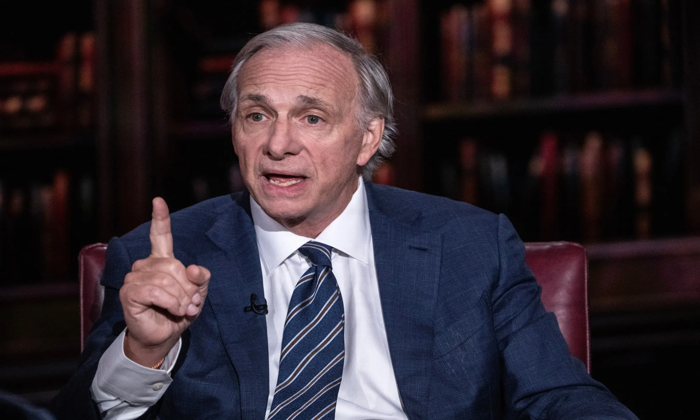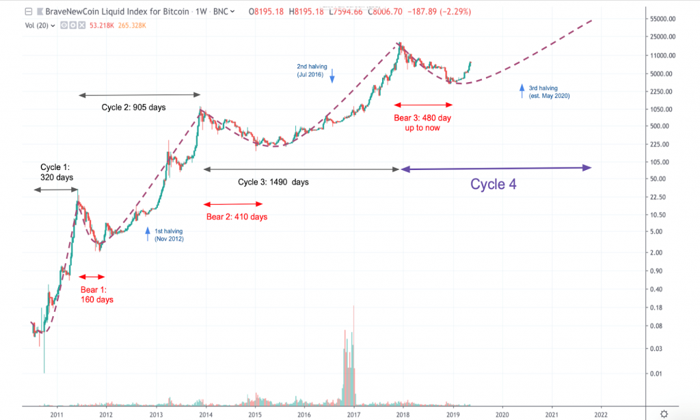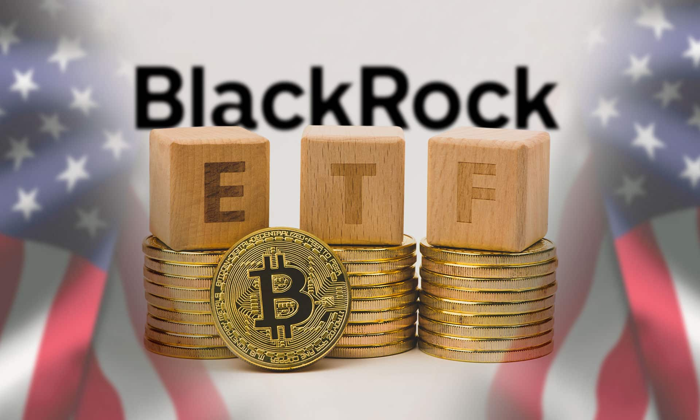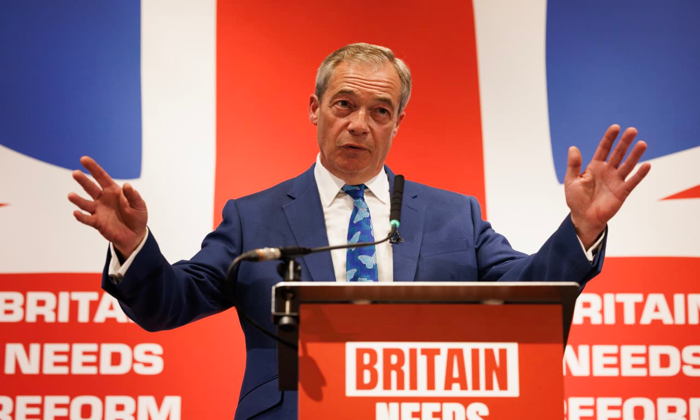Ray Dalio global systemic risk has emerged as a pressing concern in discussions surrounding the stability of the global economy. With rising financial market volatility and fears of a global economic crisis, Dalio warns that we may be facing a significant breakdown in the monetary and geopolitical order. As the U.S. grapples with enormous tariffs and ongoing political instability, the implications for investors are profound. However, amidst this chaos, Bitcoin demonstrates remarkable resilience, possibly positioning itself as a safe haven asset. As economic conditions evolve, understanding the dynamics of systemic risk will be crucial for navigating the uncertainties ahead.
In recent dialogues, financial strategist Ray Dalio has highlighted the precarious nature of the world’s economic framework, emphasizing potential systemic threats. These discussions revolve around issues like currency fluctuations, trade tensions, and elevated government debt levels, all hinting at an impending crisis. As major currencies like the U.S. dollar falter and tariff uncertainties loom large, the stakes for investors and markets are rising. Interestingly, amid these unsettling conditions, cryptocurrencies like Bitcoin have shown themselves to be increasingly robust. This juxtaposition of traditional financial instability against the relative strength of digital assets will necessitate new frameworks for understanding modern economic resilience.
Ray Dalio’s Warning: Global Systemic Risk
In a recent interview, Ray Dalio has raised alarms about an impending systemic risk that could destabilize the global economic order. He draws parallels between current market conditions and historical economic calamities, such as the 2008 financial crisis and the end of the gold standard in 1971. Dalio’s perspective is rooted in the growing concerns surrounding the U.S. deficit and its implications for fiscal policy. With increasing market volatility and uncertainty stemming from tariffs and debt levels, his warnings resonate deeply within the current financial context.
Furthermore, Dalio emphasizes the urgent need for legislative action to mitigate the U.S. federal deficit, advocating for a reduction to 3% of GDP. As the U.S. Treasury yields continue to rise, many investors are becoming wary. Economic instability is further compounded by fluctuating tariff policies, especially as mixed signals from the U.S. administration add to the anxiety gripping financial markets. The high levels of debt combined with low investor confidence create a precarious situation resembling past economic downturns.
Bitcoin Resilience Amidst Economic Uncertainty
Amidst Ray Dalio’s dire warnings, Bitcoin has emerged as a beacon of resilience in the tumultuous landscape of financial markets. As traditional assets face significant pressures from rising yields and tariff uncertainties, Bitcoin has shown a remarkable ability to maintain stability and even thrive. Currently approaching $85,000, its upward trajectory contrasts sharply with the volatility seen in other markets, positioning it as a possible alternative safe haven for investors looking to escape the chaos.
This resilience is particularly notable as global economic crises often lead to increased interest in cryptocurrencies. Bitcoin’s decentralized nature and limited supply make it an appealing choice during times of financial instability. With Dalio himself highlighting the fragility of the current monetary system, many are considering Bitcoin not only as an investment but as a hedge against potential future economic downturns. As Bitcoin continues to defy the odds, it could very well redefine safe-haven assets in the face of looming global systemic risks.
The Impact of U.S. Political Stability on Financial Markets
The political landscape in the U.S. plays a crucial role in shaping global financial markets, with the current climate breeding uncertainty. Ray Dalio points out that inconsistent tariffs and an unclear fiscal policy create a breeding ground for market volatility. The instability stemming from political decisions influences investor confidence, leading to fluctuations in trading volumes and drastic market shifts. As U.S. political stability remains in question, global markets feel the repercussions, reflecting a delicate interdependence between policy decisions and economic outcomes.
Moreover, the ongoing tension in U.S. political discourse exacerbates feelings of uncertainty among investors. With every policy announcement, particularly regarding tariffs, we see fluctuations in asset prices, further emphasizing the correlation between political stability and financial market performance. Investors are increasingly wary of entering markets that seem to oscillate with political whims, driving some to explore alternative investments, such as Bitcoin, known for its potential stability in uncertain times. As the dialogue around U.S. political stability continues, its impact on financial markets remains a critical focus of investors.
Tariff Uncertainty and Its Effect on Global Economies
Tariff uncertainty is a significant factor contributing to the volatility of global markets, as highlighted by Ray Dalio’s alarm over potential economic repercussions. The fluctuating nature of trade policies introduces unpredictability into financial forecasting, disrupting trade relationships and elevating tensions among nations. As tariffs change, businesses must adapt to new costs, which can deter investment and curtail economic growth. This unpredictability leads to a turbulent climate where investors hesitate, fearing potential losses due to abrupt policy changes.
Additionally, with ongoing shifts in U.S. tariff policies, many countries are navigating their own economic strategies amidst the uncertainty. For instance, China’s trade negotiations and responses to U.S. tariffs significantly impact global supply chains, directly affecting commodity prices and foreign exchange rates. The indirect effects of tariffs extend beyond trade balances, leading to changes in investor behavior and sentiments towards riskier assets, including cryptocurrencies like Bitcoin, which may serve as a hedge in times of trade-related instability.
The Future of Investment Strategies amid Systemic Risks
With Ray Dalio’s insights on global systemic risks, investors are re-evaluating their strategies in light of increasing market volatility and economic uncertainty. Historically, periods of heightened risk have led to shifts in investor behavior, with many seeking to diversify their portfolios to mitigate potential losses. The emergence of alternative investments, such as cryptocurrencies and commodities, reflects a growing trend among investors to secure their assets against systemic shocks. Identifying the sectors most resilient to economic downturns will be paramount for investment success in this evolving landscape.
As traditional investments face challenges from rising yields, decreasing political stability, and tariff-induced fluctuations, the demand for non-traditional assets is likely to increase. Bitcoin’s recent trajectory, as it approaches new highs, may signal a transformation in investor risk appetite. This pivot towards alternative assets not only indicates a response to immediate concerns but may also outline a long-term trend where diversification becomes the key to navigating uncertain economic times. Investors must capitalize on this shift to safeguard their portfolios and remain competitive in today’s fluid market.
Lessons from Historical Economic Crises
Ray Dalio draws from significant historical precedents to emphasize the lessons that can be learned from past economic crises. Events like the 2008 financial meltdown and the transition away from the gold standard serve as stark reminders of how systemic risks can precipitate widespread economic failure. By analyzing these crises, investors can better understand the indicators that signal impending downturns and take proactive measures to safeguard their investments. Learning from history equips financial professionals to anticipate possible market corrections and implement strategies to endure economic turbulence.
Recognizing the patterns that led to previous systemic breakdowns provides invaluable insights into current investing landscapes. The fragility of today’s economic framework, exacerbated by rising debt levels and tariff uncertainties, mirrors consequences observed during past crises. Investors who heed Dalio’s warnings and understand the cyclical nature of economic systems will be better prepared to navigate financial markets, particularly as they brace for potential shocks that could reshape their investment approaches.
Understanding the Bond Market’s Evolution
Amidst the growing concerns surrounding systemic risks, the bond market exhibits signs of volatility that cannot be ignored. As Ray Dalio highlights, rising U.S. Treasury yields indicate an ongoing shift that investors must navigate. With the 10-year and 30-year yields approaching significant thresholds, the bond market’s health becomes a barometer for the overall economy. Elevated yields suggest that investors are demanding higher returns for the perceived risk of holding government debt, which can lead to increased borrowing costs for businesses and households if this trend continues.
The bond market’s evolution is closely tied to fiscal policies, particularly in light of rising federal deficits and changes in trade dynamics. Monitoring consumer and institutional responses to yield fluctuations will be crucial for anticipating future trends. Investors should consider the interconnectedness of bonds, equities, and alternative investments like Bitcoin when crafting their strategies. As traditional hedge mechanisms face challenges in today’s environment, adapting to the evolving bond market landscape may unlock new opportunities for secure investments amid uncertainty.
Navigating Market Volatility in Uncertain Times
In the face of looming systemic risks as articulated by Ray Dalio, navigating the complexities of market volatility becomes a pressing concern for investors. The current landscape characterized by tariff unpredictability and rising debt levels compels investment professionals to reconsider their approaches. Developing a keen understanding of market trends and the underlying economic indicators is essential for making informed decisions that align with one’s financial goals.
Adopting a multi-faceted investment strategy that balances risk and opportunity is crucial in periods of uncertainty. Investors may find themselves turning to hard assets like commodities, or digital assets such as Bitcoin, which historically show resilience in times of financial distress. By understanding and adapting to the nuances of market volatility, investors can strategically position themselves to weather the economic storms hinted at by Dalio’s warnings.
The Role of Innovation in Financial Solutions
As we navigate the turbulence of global systemic risks outlined by thought leaders like Ray Dalio, innovation in financial solutions emerges as a critical component for future stability. Traditional finance is increasingly challenged by the disruptive nature of technology, leading to the birth of novel investment approaches and asset classes. Cryptocurrencies, decentralized finance (DeFi), and blockchain technology are at the forefront of this innovation, creating opportunities previously unimagined in traditional economic frameworks.
Innovative financial solutions present new avenues for investors seeking to safeguard their assets against systemic risks. For instance, Bitcoin’s paradigm as a decentralized currency offers a hedge against inflation and systemic breakdowns, reflecting a growing trend toward alternative monetary systems. As market volatility and global uncertainties continue, embracing these innovations will be crucial for adapting investment strategies that anticipate and respond effectively to the challenges ahead.
Frequently Asked Questions
What does Ray Dalio mean by global systemic risk?
Ray Dalio emphasizes global systemic risk as a profound danger to the interconnected economic and political structures worldwide. He warns that factors like rising U.S. debt, tariff uncertainty, and financial market volatility could lead to a considerable collapse, akin to historical events like the 2008 financial crisis.
How does Bitcoin’s resilience relate to Ray Dalio’s warnings about global systemic risk?
Despite Ray Dalio’s alarms regarding global systemic risk, Bitcoin has demonstrated surprising resilience. As markets face volatility and uncertainty, Bitcoin is increasingly viewed as a potential safe haven, reflecting its growing importance in securing assets amidst economic turmoil.
What factors contribute to the global economic crisis according to Ray Dalio?
Ray Dalio attributes the potential global economic crisis to several factors, including escalating U.S. debt levels, political instability, and tariff uncertainty, all of which exacerbate financial market volatility and create an unstable economic environment.
What is the impact of U.S. political stability on global systemic risk as per Ray Dalio?
Ray Dalio suggests that U.S. political stability is crucial in mitigating global systemic risk. Increasing political turmoil, particularly related to trade policies and debt management, may lead to greater financial market volatility and threaten the overall economic order.
How does tariff uncertainty affect global systemic risk identified by Ray Dalio?
Tariff uncertainty plays a significant role in elevating global systemic risk. Ray Dalio argues that mixed signals from the U.S. government on tariffs contribute to economic instability, resulting in increased market volatility and potential negative repercussions on international trade.
| Cryptocurrency | Price (USD) | Change (%) |
|---|---|---|
| BTC | $84,315.64 | -0.68 |
| ETH | $1,635.39 | +0.53 |
| USDT | $0.9998 | +0.01 |
| XRP | $2.1259 | -4.63 |
| BNB | $588.58 | -0.93 |
| SOL | $131.64 | +0.14 |
| USDC | $1.0000 | -0.00 |
| TRX | $0.2566 | +4.09 |
| DOGE | $0.1632 | -2.84 |
| ADA | $0.6361 | -4.49 |
| LEO | $9.3872 | -0.29 |
| LINK | $12.74 | -3.08 |
| AVAX | $20.02 | -1.13 |
| XLM | $0.2432 | -2.79 |
| SUI | $2.2866 | -3.18 |
| SHIB | $0.0₄1218 | -1.99 |
| TON | $2.8363 | -2.62 |
| HBAR | $0.1665 | -4.94 |
| BCH | $336.42 | -2.90 |
| LTC | $77.27 | -2.66 |
Summary
Ray Dalio global systemic risk is a pressing issue as the renowned investor warns of significant vulnerabilities within the current global economic framework. Amidst rising yields and tariff uncertainties, his concern extends beyond mere market fluctuations to a potential systemic crisis similar to past economic shocks. As Bitcoin displays resilience in uncertain times, it may serve as a beacon of stability for investors seeking alternatives. Dalio’s call for urgent policy action on the U.S. deficit and trade further highlights the critical need for addressing these threats to preserve economic stability.
Ray Dalio’s warnings about global systemic risk have captured widespread attention, highlighting the precarious state of our economic landscape. As tensions rise amidst ongoing financial market volatility, Dalio suggests that the U.S. political stability is increasingly at risk, raising concerns about the national debt and trade policies. He points to factors like tariff uncertainty as catalysts for this instability, which could lead to a looming global economic crisis. Yet, amid these challenges, Bitcoin’s resilience stands out as a beacon of hope for investors seeking alternatives. As the markets grapple with these systemic risks, the question remains: can Bitcoin thrive despite the chaotic backdrop?
In discussions surrounding overarching global economic vulnerabilities, many analysts are focusing on the increasing systemic threats posed by current national and international policies. Financial instability often manifests in market fluctuations, heightened especially by shifts in trade regulations and national debt levels. As experts draw parallels between today’s economic landscape and past upheavals—like the transition away from the gold standard and the 2008 financial meltdown—there’s a growing fear of an impending crisis. Interestingly, amidst this financial turbulence, Bitcoin has emerged as a notable asset showcasing resilience, challenging traditional notions of safety in turbulent markets. Understanding these dynamics is crucial for investors looking to navigate the complexities of today’s economy.















